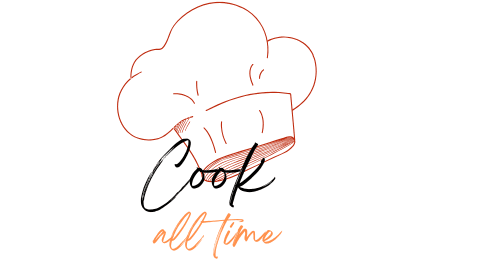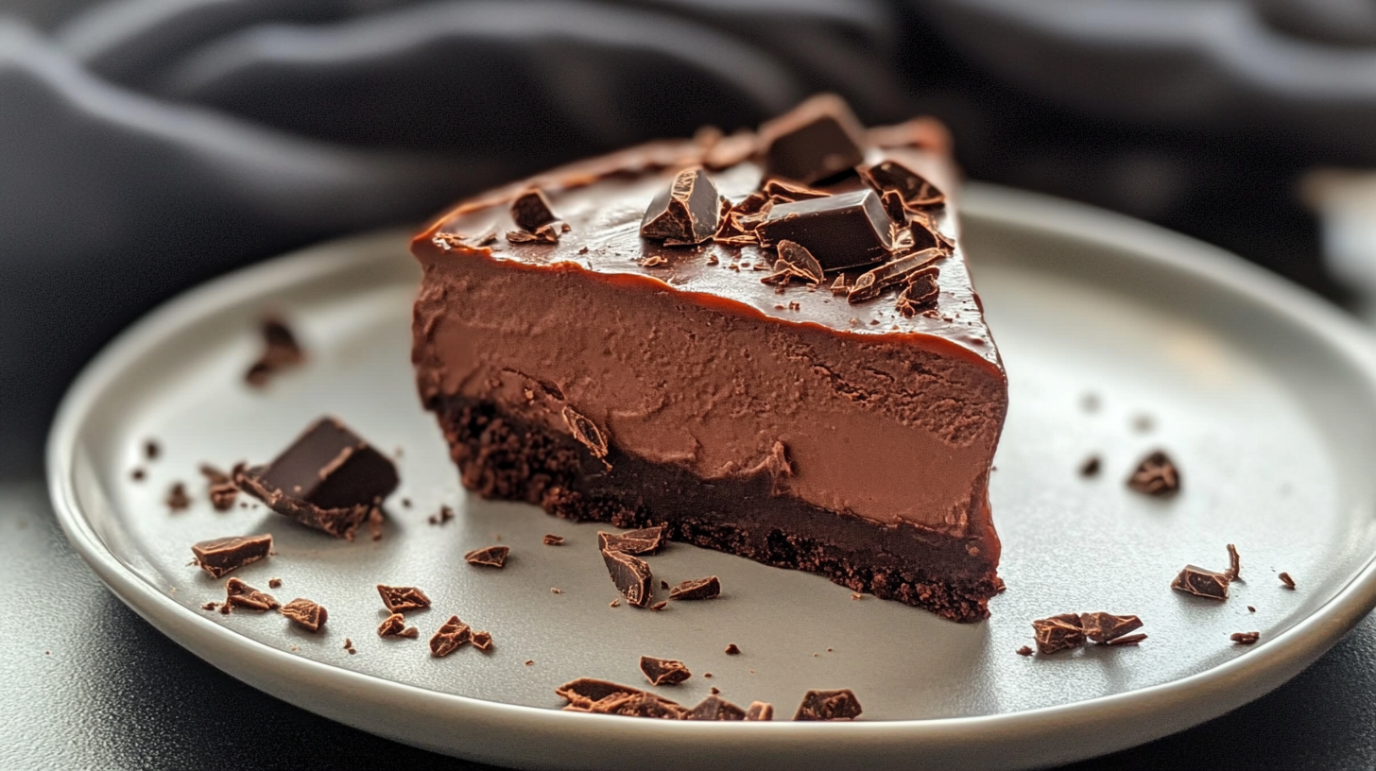You’ve probably found yourself craving chocolate at some point, whether it’s during a stressful day or a simple desire for a sweet treat. But why does this happen? There’s more to these cravings than just a desire for something sugary. Chocolate cravings can be linked to a variety of factors, from physical nutrient deficiencies to emotional triggers and hormonal fluctuations. Understanding why you crave chocolate can help you manage these urges in a healthier way.
In this article, we’ll dive deep into the science behind chocolate cravings, offering insights into the physiological and psychological factors that contribute to these irresistible urges. By the end of this guide, you’ll have a better understanding of how to control your cravings and satisfy your chocolate desires without guilt.
Table of Contents
The Science Behind Chocolate Cravings
The reasons behind your craving chocolate are not merely based on preference or indulgence. These cravings are driven by a combination of biological and psychological factors. To truly grasp why chocolate has such a hold over you, let’s explore the key influences that fuel these cravings.
Nutrient Deficiencies
Sometimes, when you’re craving chocolate, it could be your body’s way of signaling a nutrient deficiency. Our bodies are intricate systems, and they communicate their needs through cravings. This is especially true for chocolate, which contains several nutrients that play important roles in your overall health.
Magnesium and Other Essential Nutrients
One of the most common nutrients linked to chocolate cravings is magnesium. Chocolate, particularly dark chocolate, is a rich source of this mineral. Magnesium is involved in over 300 biochemical reactions in your body, helping to regulate nerve function, muscle function, and energy production.
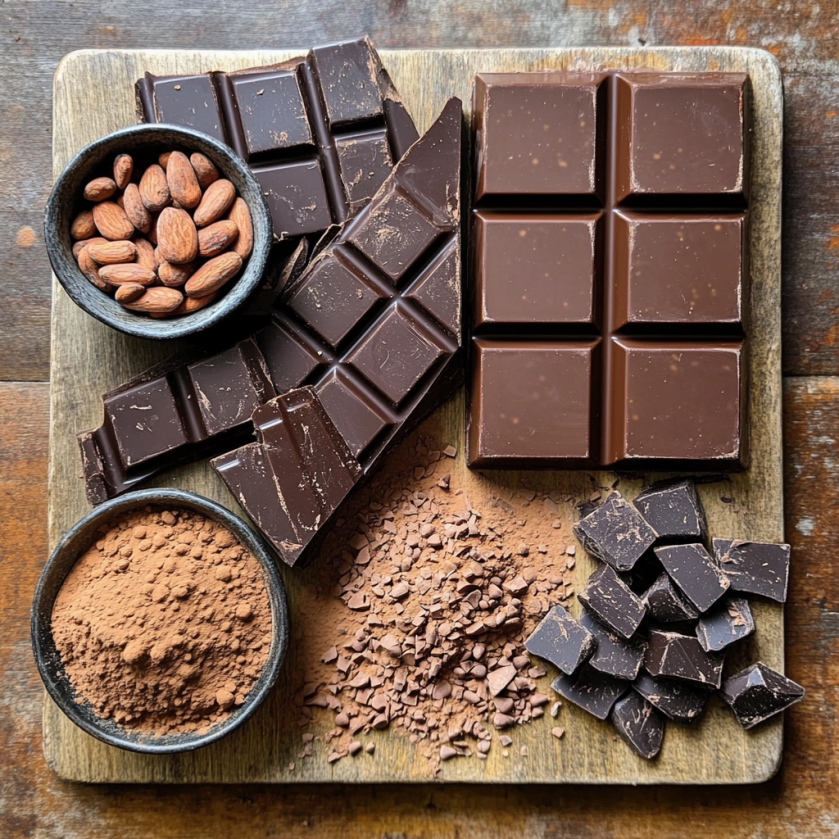
When your magnesium levels are low, your body may send signals in the form of chocolate cravings. If you’re often feeling fatigued, stressed, or unable to relax, you might need more magnesium.
Other nutrients found in chocolate that can contribute to cravings include:
- Iron: Helps with oxygen transport in your blood.
- Zinc: Important for immune function and skin health.
- Copper: Plays a key role in maintaining healthy tissues.
You can meet your magnesium needs by eating foods like nuts, seeds, and leafy greens. However, indulging in chocolate from time to time may also help satisfy your body’s need for magnesium.
Emotional and Psychological Triggers
Your craving chocolate isn’t just a physical response; it can be linked to your emotional state. Chocolate has long been associated with pleasure and comfort. This psychological connection can trigger cravings during emotional times.
Stress, Mood, and Chocolate
When you’re stressed or anxious, you may crave chocolate because it can trigger the release of endorphins, the “feel-good” chemicals in your brain. Chocolate contains a compound called theobromine, which has mild stimulant effects and can help improve your mood. In addition, chocolate can also boost serotonin levels, contributing to feelings of happiness and relaxation.
Over time, you may have developed a habit of reaching for chocolate whenever you feel stressed or sad. This can create a cycle, where your brain associates chocolate with emotional relief. While chocolate may offer short-term comfort, it’s important to address the underlying emotional triggers to avoid relying on food for emotional regulation.
Hormonal Changes
Hormonal fluctuations are another significant factor in your craving chocolate. Your body goes through several hormonal changes throughout the month, and these changes can influence your desire for sweet treats like chocolate.
How PMS and Hormones Affect Cravings
Many women experience stronger chocolate cravings during the premenstrual phase (PMS). This is due to hormonal changes, specifically the fluctuation of estrogen and progesterone levels. During PMS, your body may also experience a drop in serotonin levels, which can lead to mood swings and increased cravings for comfort foods like chocolate.
If you’re experiencing PMS, it’s not just the emotional changes that make you craving chocolate—your body is actually seeking out chocolate as a way to boost serotonin and relieve some of the discomfort that comes with hormonal changes.
In addition to PMS, other hormonal changes throughout your life, such as during pregnancy or menopause, can also increase your cravings for chocolate.
Blood Sugar Levels
Your body’s blood sugar levels play a pivotal role in determining when you’re craving chocolate. The impact of sugar crashes can leave you feeling irritable, tired, and desperate for something sweet.
The Impact of Sugar Crashes
When your blood sugar levels drop too low, your body signals that it needs a quick source of energy. This is when the intense craving for chocolate can strike. Chocolate, particularly milk chocolate, contains sugar and fat, both of which can raise your blood sugar levels rapidly. This makes it an ideal, albeit temporary, solution to combat a sugar crash.
However, relying on chocolate for quick energy can lead to a cycle of highs and lows in your blood sugar, leaving you reaching for more sweets throughout the day. To stabilize your blood sugar levels, try eating balanced meals with protein, fiber, and healthy fats to keep your energy levels stable.
Habit and Conditioning
Another reason why you might find yourself craving chocolate is simply because you’ve conditioned your body and mind to expect it. This learned behavior is not uncommon, and it often develops over time.
Learned Behaviors and Chocolate Consumption
If you’ve frequently enjoyed chocolate as a treat during specific moments—such as after dinner or when watching a movie—your brain begins to associate these activities with chocolate. Over time, this habit can become ingrained, and you may start to crave chocolate whenever you engage in those activities, even if you’re not truly hungry.
This type of conditioning is a powerful psychological force, as it can lead to habitual cravings even when you’re not physically in need of a chocolate fix. Breaking this cycle requires conscious effort, such as replacing the habit with a healthier alternative or finding new ways to engage in the activities you associate with chocolate.
How to Satisfy Your Chocolate Cravings in a Healthy Way
While understanding why you’re craving chocolate is crucial, it’s also important to know how to satisfy these cravings in a healthy way. Here are some practical tips to help you indulge in chocolate without going overboard.
Healthy Chocolate Recipes
Instead of reaching for a traditional chocolate bar, why not try a healthier chocolate recipe? Below, we’ve included some simple yet delicious recipes that can help you satisfy your chocolate cravings in a more mindful way.
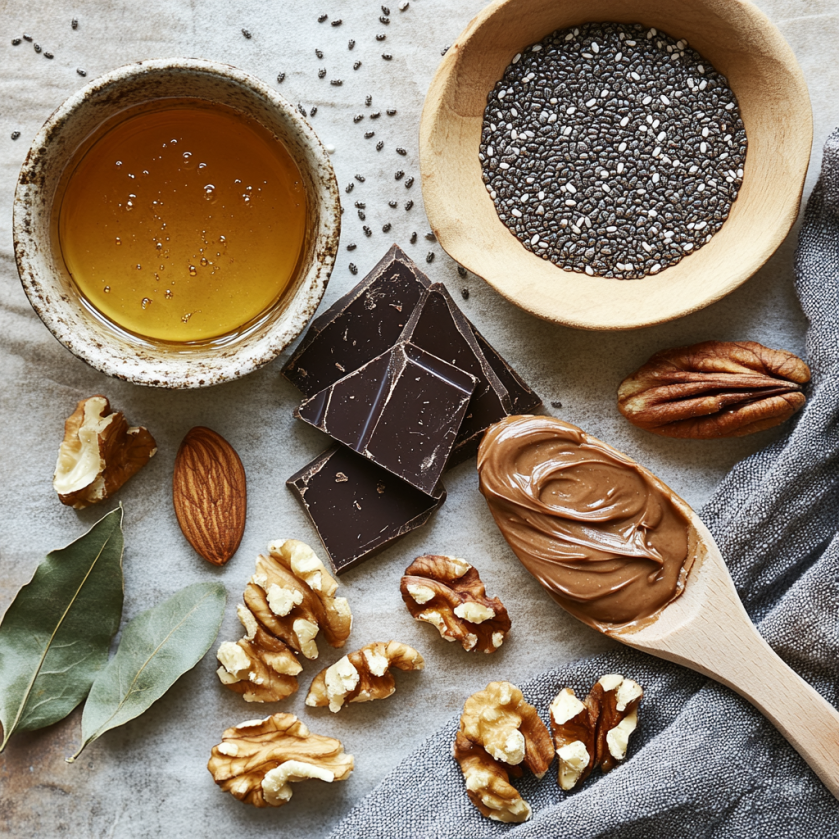
| Ingredient | Amount |
|---|---|
| Dark chocolate (70% or higher) | 100g |
| Almond butter | 2 tbsp |
| Chia seeds | 1 tbsp |
| Walnuts (chopped) | ¼ cup |
| Honey or maple syrup | 1 tbsp |
Instructions:
- Melt the dark chocolate over a double boiler.
- Once melted, mix in almond butter and sweetener.
- Stir in chia seeds and chopped walnuts.
- Pour the mixture into molds and refrigerate until set.
This treat provides a healthier alternative, thanks to the high-quality chocolate and the added benefits of nuts and seeds.
Mindful Chocolate Consumption
It’s not about depriving yourself, but about being mindful of your consumption. Consider these tips when enjoying chocolate:
- Portion control: Enjoy smaller amounts of chocolate to prevent overindulgence.
- Choose dark chocolate: It has less sugar and more antioxidants than milk chocolate.
- Pair with healthy snacks: Combine chocolate with fruits or nuts for a balanced treat.
The Influence of Advertisements
It’s not just your body or mind that influences your craving chocolate—advertisements and marketing play a significant role as well. Everywhere you look, chocolate seems to be calling out to you, from billboards to social media posts, tempting you to indulge in your favorite treat. But what impact does marketing really have on your chocolate cravings?
How Marketing Affects Your Cravings
When it comes to chocolate, marketing plays a powerful role in shaping your desires. Advertisements often present chocolate as the ultimate comfort food, associating it with pleasure, celebration, and moments of indulgence. By creating an emotional connection to the product, these ads tap into your psychological triggers, making you associate chocolate with happiness or relaxation.
You’ve likely seen many ads that feature people enjoying chocolate while relaxing, sharing a treat with loved ones, or celebrating special occasions. These associations can activate your own desire for chocolate, leading to a heightened craving, even if you weren’t initially thinking about it.
Moreover, marketing messages often focus on the luxury and rewarding aspects of chocolate, which encourages you to treat yourself whenever you feel stressed or in need of a pick-me-up.
Gut Microbiome and Chocolate
Your craving chocolate could be tied to your gut health. Research has shown that the microorganisms living in your digestive system, collectively known as the gut microbiome, have a surprising influence on your cravings. But how exactly does this connection between gut health and chocolate cravings work?
The Connection Between Gut Health and Sweet Cravings
The gut microbiome plays a key role in regulating your appetite and food preferences. Certain bacteria in your gut thrive on sugar, and they can signal to your brain that they need more sweet foods to survive. As a result, you may find yourself craving chocolate because your gut microbiome is encouraging you to feed it sugar.
Furthermore, chocolate contains compounds that can interact with the gut microbiota. Some studies suggest that the prebiotics in dark chocolate may help promote the growth of beneficial bacteria. In turn, these bacteria can help improve digestion, mood, and even reduce cravings for other, less healthy foods.
However, it’s important to keep in mind that while chocolate can have a positive impact on your gut, consuming it in large quantities may throw off your gut balance and lead to more cravings. Moderation is key.
Healthy Ways to Satisfy Chocolate Cravings
Even though craving chocolate can be hard to resist, it’s possible to satisfy those cravings in healthier ways. By choosing the right type of chocolate and pairing it with wholesome ingredients, you can enjoy the rich taste of chocolate while maintaining your health.
Dark Chocolate, Alternatives, and Balanced Diet
Dark chocolate is one of the healthiest options when you’re looking to indulge in your chocolate cravings. It’s rich in antioxidants and has less sugar than milk chocolate. Choosing a higher cocoa content—preferably 70% or higher—can help satisfy your cravings with fewer negative effects on your health.
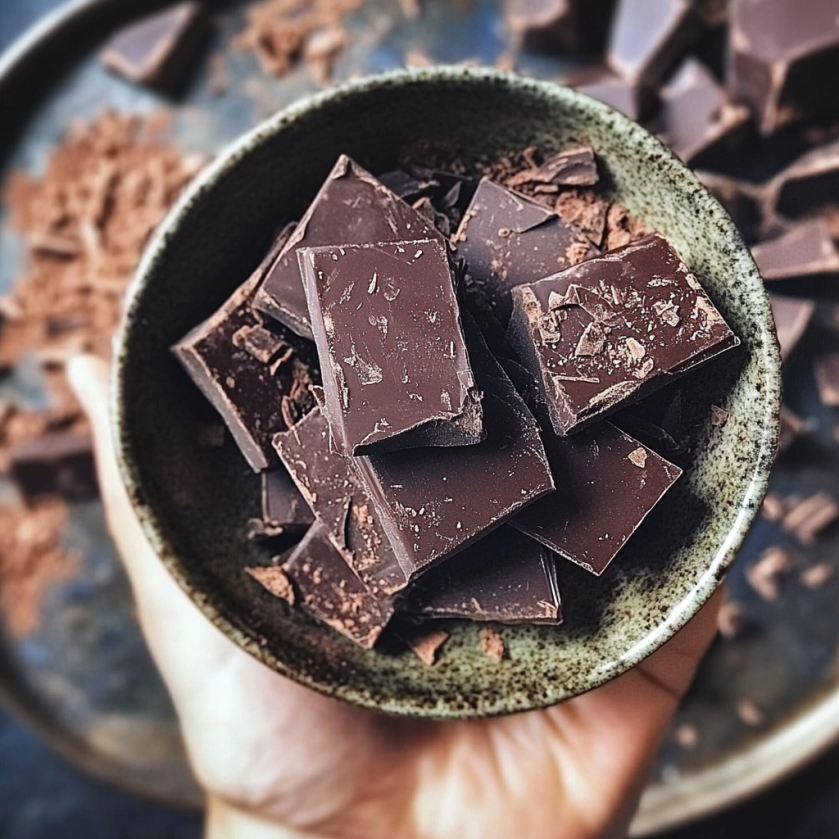
Additionally, there are several alternatives to traditional chocolate that are not only satisfying but also nutritious. Consider using ingredients like cacao nibs, which offer the same deep chocolate flavor without the added sugar, or enjoy cacao powder in smoothies and baked goods. These options can provide you with the chocolate taste you’re craving while offering health benefits such as antioxidants and fiber.
Another great way to curb chocolate cravings is by incorporating it into a balanced diet. Ensure your meals contain adequate protein, healthy fats, and fiber, which can help keep your blood sugar stable and reduce your cravings for sweet treats.
Tips to Satisfy Chocolate Cravings:
- Opt for dark chocolate with a higher cocoa percentage.
- Pair chocolate with nuts or fruits to add nutritional value.
- Drink hot cocoa made with unsweetened cocoa powder and a small amount of natural sweetener.
- Chocolate-based recipes like these Chocolate Chip Cupcakes offer a satisfying treat in moderation.
| Ingredient | Amount |
|---|---|
| Dark chocolate (70%+ cocoa) | 100g |
| Almonds (chopped) | ¼ cup |
| Dried cranberries | ¼ cup |
| Chia seeds | 1 tbsp |
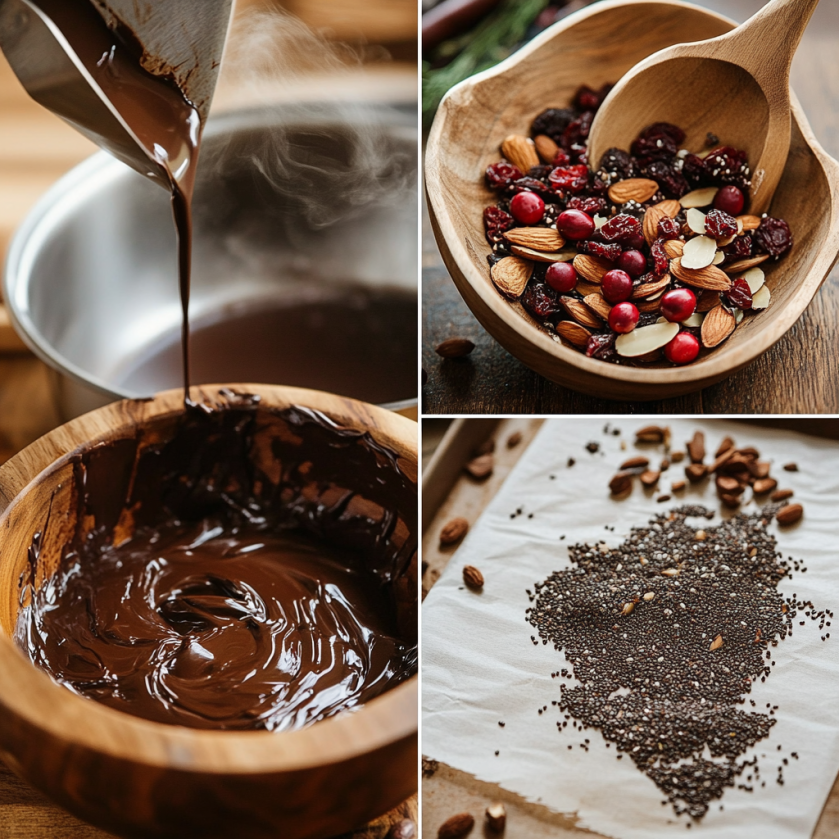
Instructions:
- Melt the dark chocolate in a double boiler.
- Mix in chopped almonds, dried cranberries, and chia seeds.
- Spread the mixture onto a parchment paper-lined baking sheet.
- Refrigerate for an hour to harden, then enjoy a healthier chocolate treat.
Unique Chocolate Dishes to Try
If you love chocolate, why not explore different ways to enjoy it? For instance, this Decadent Chocolate Gravy Recipe provides a creative twist that pairs well with biscuits, pancakes, or waffles.
Or, if you’re in the mood for something cold, Neapolitan Ice Cream is a great way to enjoy chocolate alongside vanilla and strawberry.
FAQs
What does it mean if you crave chocolate?
If you find yourself craving chocolate, it could be your body’s way of signaling a variety of needs. For example, it might indicate a deficiency in certain nutrients like magnesium or iron. Alternatively, it could be an emotional or psychological craving linked to stress or mood swings. Hormonal fluctuations, especially during PMS, may also trigger an increased desire for chocolate.
What deficiencies cause chocolate cravings?
Certain nutrient deficiencies are commonly linked to craving chocolate. Magnesium deficiency is one of the most frequently cited causes, as chocolate is rich in this mineral. Iron, zinc, and copper deficiencies have also been associated with chocolate cravings. If you regularly crave chocolate, it may be worth evaluating your diet to ensure you’re getting enough of these essential nutrients.
What hormone makes you crave chocolate?
Hormones such as serotonin and dopamine play a significant role in your chocolate cravings. Low serotonin levels, often seen during PMS or stress, can cause you to crave foods that trigger the release of feel-good chemicals like chocolate. Similarly, the reward system in your brain, which involves dopamine, can cause cravings for high-reward foods like chocolate when you’re feeling low or seeking comfort.
Does craving chocolate mean low iron?
While craving chocolate can be a sign of low iron, it’s not a definitive indicator. However, chocolate does contain small amounts of iron, which may prompt cravings when your iron levels are low. If you frequently crave chocolate and feel fatigued, it might be a good idea to check your iron levels and adjust your diet accordingly.
Conclusion
Understanding why you’re craving chocolate can help you take control of your cravings in a healthy and informed way. Whether it’s due to a nutrient deficiency, emotional triggers, hormonal fluctuations, or even marketing influences, being aware of the root causes behind your chocolate cravings can help you make better choices. By incorporating healthier chocolate options like dark chocolate or cacao into your diet and balancing your meals, you can satisfy your chocolate cravings without guilt.
The key to managing chocolate cravings lies in moderation and making mindful decisions about what you consume. So, the next time you feel the urge for something sweet, consider your body’s needs and opt for healthier alternatives to enjoy chocolate’s rich, satisfying taste.
